The True Cost of Paper Documents: Calculating the Hidden Expenses in Your Document Workflow
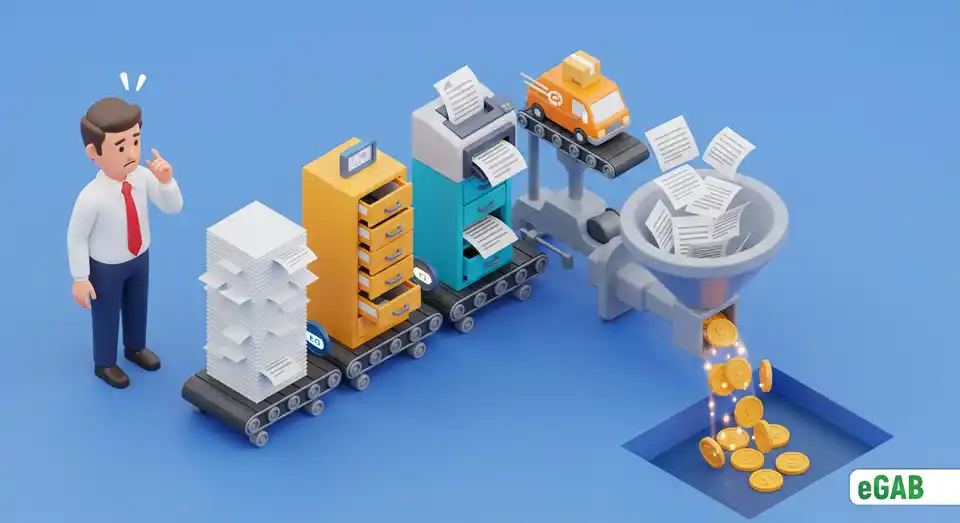
 Author:
Artem Grigoriev
Author:
Artem Grigoriev
- How Do Material and Production Costs Add Up?
- What Are the Financial Burdens of Physical Storage and Archiving?
- Why Are Shipping and Distribution Major Hidden Expenses?
- What Is the Overall Impact on Business Revenue and Efficiency?
- How eGAB Eradicates the Hidden Costs of Paper
- Summary: Uncovering the Financial Black Hole in Your Filing Cabinet
Do you ever glance at that row of filing cabinets and just see simple office furniture? The truth is, you’re looking at a major drain on your budget and ignoring the hidden risks of your filing cabinet. It's one of the most expensive-and most overlooked-costs in business. The true cost of paper documents isn't just the few cents you spend on a sheet of paper. It’s a cascade of hidden expenses that drags down your entire document workflow . This starts with the surprising cost of printing and copying and stretches to the steep labor cost of filing documents . These seemingly small costs quietly add up over time, creating a significant financial impact of paper-based processes . And the shocking part? Most businesses don't even stop to track them. This article is your guide for calculating paper document costs . We'll break down every single expense-from initial storage to final shredding-and show you exactly how much your paper system is really hitting your bottom line.
📘 This post is part of our comprehensive guide to "The Problems with Paper Documents: A Complete Guide". Explore it to find answers to all your questions ;)
How Do Material and Production Costs Add Up?
Have you ever stopped to think about the real cost of a single piece of paper in your office? So, what is the true cost of a piece of paper for a business? It's easy to write it off as a fraction of a cent, but that’s just the tip of the iceberg. The costs tied to physical documents can quickly spiral into a major financial drain. These costs, which are all part of the document lifecycle (a document's entire journey from creation to disposal), are often hiding in plain sight.
Here's a number that might surprise you: on average, simple printing activities cost a company a staggering $725 per employee every year . This figure covers the total business cost of printing and copying . According to industry analysis, that single expense can eat up 1-3% of a company's total annual revenue .
And here’s the really painful part: the sheer amount of waste. Just think about all the documents printed for a single meeting. Research shows a shocking 45-65% of all printed pages are tossed out by the end of that same day. This high level of waste creates a huge financial and environmental burden, a fact detailed in reports from government bodies like the U.S. Environmental Protection Agency (EPA Facts and Figures about Waste and Recycling) . The costs multiply the moment you print sensitive information, exposing you to critical data security risks. For example, using specialized security paper can be anywhere from 3 to 10 times more expensive than standard paper, with prices soaring from $34.49 to over $72.09 per ream . This inefficiency is only made worse by our old habits, as we make an average of 19 copies for every single original document . This practice is a recipe for version control chaos (where it's impossible to know which document is the most up-to-date) and creates information silos (where data gets locked away and isn't easily accessible across departments).
So, what happens when a crucial document gets lost in the shuffle? The cost to reproduce it is not trivial. Once you factor in the frantic search, administrative time, and materials, you’re looking at a bill for $220 to $250 . Before you even file a single page, you're already facing serious capital expenses -major, one-time costs for physical assets. The cost of filing cabinets is a perfect example. A basic 3-drawer filing cabinet can set you back over $700 , and that’s just for the empty box.
Quick Insight: If you really want to see this in action, try this experiment for just one day: place a recycling bin right next to your main office printer. The sheer volume of discarded paper will be a powerful, tangible eye-opener, showing you just how much money is literally being thrown away every day.
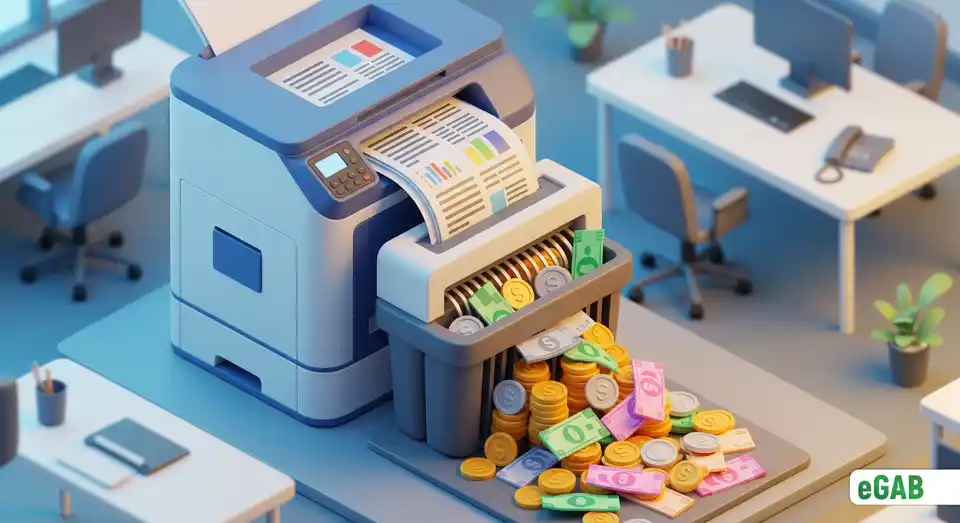
What Are the Financial Burdens of Physical Storage and Archiving?
That row of filing cabinets isn't just office furniture-it's some of the most expensive real estate your business pays for. The financial hit from physical storage goes far beyond the initial cost of the cabinets. So, how much does physical document storage cost a company? The single biggest cost is the space itself. These office real estate costs represent a huge, recurring expense. The annual physical document storage cost can be shocking, ranging from $15 to a jaw-dropping $117.50 per square foot , depending on where your office is located.
Let's break that down. A single four-drawer filing cabinet eats up about 16-17 square feet of floor space, and that includes the room you need to actually open it. At the very least, that one cabinet is costing you $240 a year in rent . But what if your business is in a prime market? That figure can easily soar to over $1,275 per cabinet, per year . The costs don't stop there. Just organizing and filling one 4-drawer cabinet is estimated to cost a staggering $25,000 in labor and supplies. Once it's full, you can expect to spend another $2,000 to $2,160 annually just on maintenance.
The human cost is massive and a huge part of your total cost of ownership (TCO) (the full expense of owning an asset, including its purchase and upkeep). Analyses on records management provide a clear productivity analysis, showing the labor cost of filing documents is significant: it costs an estimated $20 in employee time just to file one document. But what is the financial cost of a lost or misfiled document? If that same document gets misplaced, the cost of misfiling a document skyrockets to $120 . This isn't a rare mishap, either; statistics show that a shocking 22% of all documents are misfiled , and another 7.5% are lost completely , a risk that calls for a disaster-proof document strategy. These numbers starkly reveal just how inefficient manual systems really are. Even if you try to save money with off-site storage, you'll still be hit with recurring fees of $0.30 to $1.50 per box , every single month.
Try This: Take a moment to calculate the "rent" for just one of your filing cabinets. Measure its footprint, and don't forget to include the space needed to open the drawers. Now, multiply that area by your office's annual cost per square foot. You'll get a clear dollar amount for what that single cabinet is costing your business just to sit there.
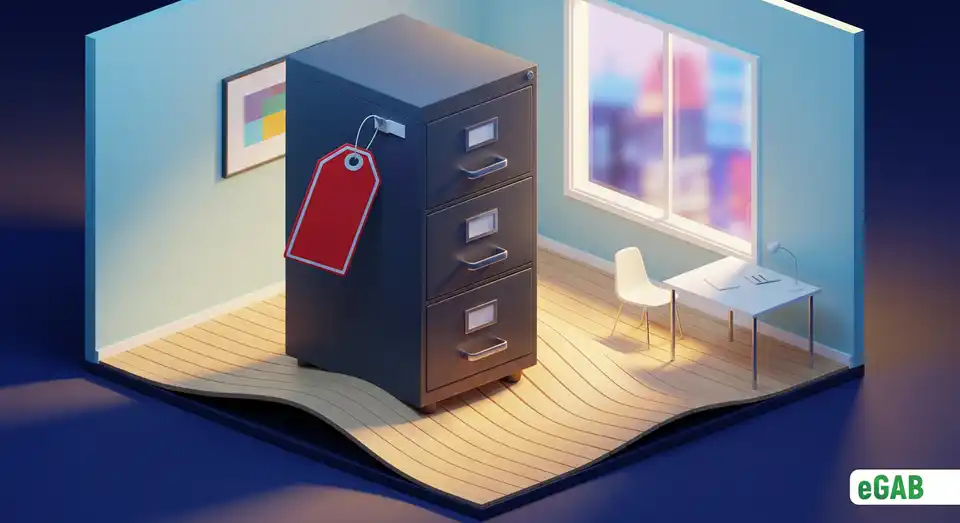
Why Are Shipping and Distribution Major Hidden Expenses?
A paper document’s life isn't just about creation and storage; it's also about a whole lot of movement. Every single time a document needs to go somewhere-whether it's across the country or just down the hall-you're racking up hidden paper document workflow expenses . Courier services are an obvious one. Sending a package via domestic USPS Priority mail starts at $10.05 , while shipping a critical document internationally will set you back at least $30.90 .
The real financial risk, however, comes when documents get lost in transit. Think about what it costs to reproduce the information, chase down new signatures, and then resend the package. This kind of expense can easily climb to $250 per incident . And even at the very end of its life, a document still costs you money. You have to ensure compliance and security through proper information governance (the process of managing data securely), which means you can’t just toss sensitive records in the recycling bin. That's why secure document destruction / shredding services charge an average of $143.49 per box .
But the biggest hidden expense of all is internal inefficiency-the wasted time and effort within your company. Why is a manual document approval process inefficient? We’ve all seen the "sneakernet," where employees physically walk documents from desk to desk for approvals, creating what is essentially the ultimate bottleneck for automation and a massive productivity drain . The inefficiency of manual document handling is a well-documented problem. In fact, a joint white paper from Xerox and IDC on Digital Workflows found that these very challenges slow everyone down. This manual routing of paper eats up valuable time that your team could be spending on the work that actually moves your business forward.
Takeaway: Here’s the bottom line: every physical step in a document's journey-from the printer to a desk, to a courier, and finally to the shredder-adds both direct costs and serious security risks. In contrast, a digital workflow with workflow automation accomplishes the same job with just a secure click, shrinks costs, and turns days of delay into seconds of work.
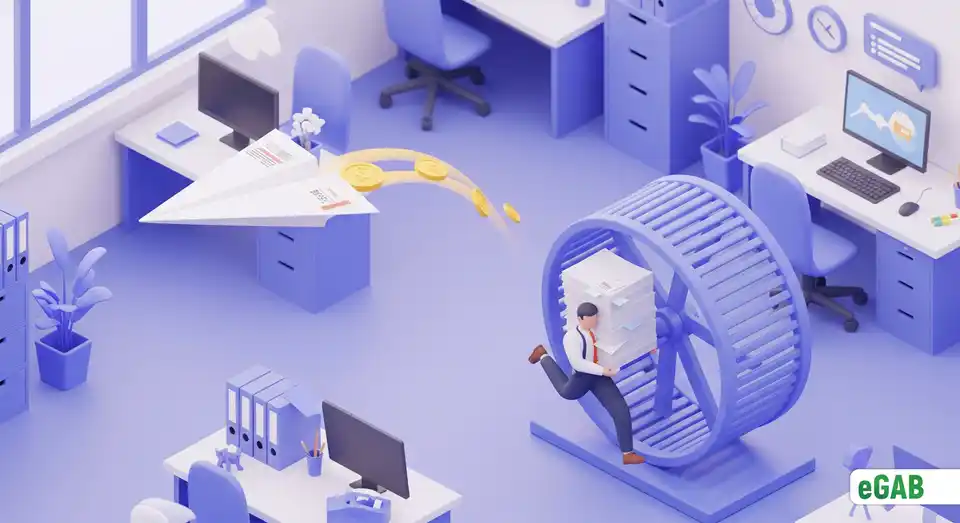
What Is the Overall Impact on Business Revenue and Efficiency?
When you finally add up all the hidden costs of document management -including materials, labor, storage, shipping, and waste-the true impact on your business becomes crystal clear. So, how much revenue do companies lose to document-related costs? According to extensive research from IDC, the total cost of paper documents is massive, eating up between 5% and 15% of a company's total business revenue . Let that sink in for a moment. This financial impact of paper-based processes isn't just a small administrative line item; it's a huge, strategic-level expense that’s directly chipping away at your profits.
And the most shocking part? A staggering 90% of companies don't track their printing costs at all . This is exactly why calculating paper document costs is such a critical first step toward getting back in control. Without it, you have a major financial drain operating completely under the radar, invisible on most balance sheets. This lack of oversight creates a ripple effect across the entire organization. For instance, IT departments spend 15% of their time just dealing with printing headaches, and these same issues are responsible for 23% of all help desk calls .
Ultimately, the financial case for going digital is overwhelming. This leads to a crucial question: is a paperless office more cost-effective? A detailed paper vs digital document cost analysis from the U.S. National Archives and Records Administration (NARA) proves it, showing the profound cost differences between paper and electronic records management. Making the switch with a modern document management system (DMS) is a core part of any digital transformation strategy, one that boosts data security and simplifies regulatory compliance . When you break it down document by document, a physical system is far more expensive; maintaining paper storage costs exponentially more than a secure digital solution. The numbers paint a stark picture: continuing to rely on paper isn't just inefficient; it's a serious financial liability that slows your company's growth and agility.
Why It Matters: That 5-15% of revenue being lost to the true cost of paper is a huge deal. It's money that you can't invest in innovation, marketing, or attracting top talent. Businesses that tackle this hidden expense by moving to a paperless office gain a powerful competitive advantage as they free up capital. On the flip side, those who ignore it are effectively letting their profits get shredded, filed, and lost.

How eGAB Eradicates the Hidden Costs of Paper
What is the true cost of a paper document? It's much more than just the price of paper and ink. It's a financial black hole of recurring expenses for printing, specialized storage, courier fees, and-most significantly-wasted employee hours. eGAB eradicates these hidden costs by digitizing and automating the entire document lifecycle .
From day one, you eliminate the constant drain of material expenses. No more ordering secure paper, no more replacing ink cartridges, and no more paying for expensive, climate-controlled archive rooms. But the biggest return on investment comes from reclaiming your team's time. By automating manual, paper-based workflows, eGAB drastically cuts down the hours employees spend on tedious tasks like filing, searching, and validating documents. That administrative overhead is directly converted back into productive, value-generating work .
Furthermore, the platform completely does away with the need for physical shipping. The costly and slow process of sending secure documents via courier is replaced with instant, free, and secure digital sharing . The financial impact is immediate and profound, turning a major operational liability into a streamlined, cost-effective asset.
Quick Insight: Run a simple audit. For one month, track your department's spending on paper, toner, and courier services. Then, estimate the hours your team spends physically handling those documents. The final number will give you a powerful business case for how quickly an investment in eGAB pays for itself.

Summary: Uncovering the Financial Black Hole in Your Filing Cabinet
So, what’s the final bill for sticking with paper? When you add it all up, the answer is crystal clear. The true cost of paper documents is a massive, invisible hole in your budget. It goes way beyond the price of paper-it's a deep-rooted problem that infects your entire document lifecycle , from the moment a document is created to when it’s finally destroyed. Let's start with the upfront expenses, where the numbers are shocking. You’re spending $725 per employee, every year , just on basic printing. What's worse? A staggering 45-65% of those pages end up in the trash the very same day. These material costs skyrocket when you add in capital expenses , like a $700 filing cabinet. And if a document gets lost, you're looking at an eye-watering $220 to $250 just to replace it.
But the real financial damage comes from the long-term burden of physical storage. That filing cabinet isn't just furniture; it's expensive real estate. Your physical document storage costs can climb past $1,275 per cabinet annually , depending on where you're located. The human cost is even steeper. Your team spends about $20 in labor just to file a single document . And what happens when someone misfiles it? It'll take $120 to find it again . This isn't a rare mistake-it happens to a reported 22% of all documents. These workflow problems only get worse when you factor in the cost of moving paper, from courier fees to the massive productivity drain of walking documents around for approvals.
Ultimately, all these individual costs snowball into a major strategic problem. The financial impact of paper-based processes eats up a jaw-dropping 5% to 15% of a company's total annual revenue . Here's the scary part: most businesses don't even track these expenses, letting their profits get eaten away by overlooked costs in printing, filing, and shipping. The verdict from any detailed paper vs. digital document cost analysis is clear. Moving to a paperless office with a modern document management system (DMS) isn't just about convenience-it's a critical business decision. It plugs a massive financial leak, boosts your security, and frees up vital capital. This gives your company a powerful competitive advantage in today's digital world.
➡️ Where to from here? The financial drain is significant, but what about the impact on your team's efficiency? Dive into a productivity analysis of time wasted on paperwork.
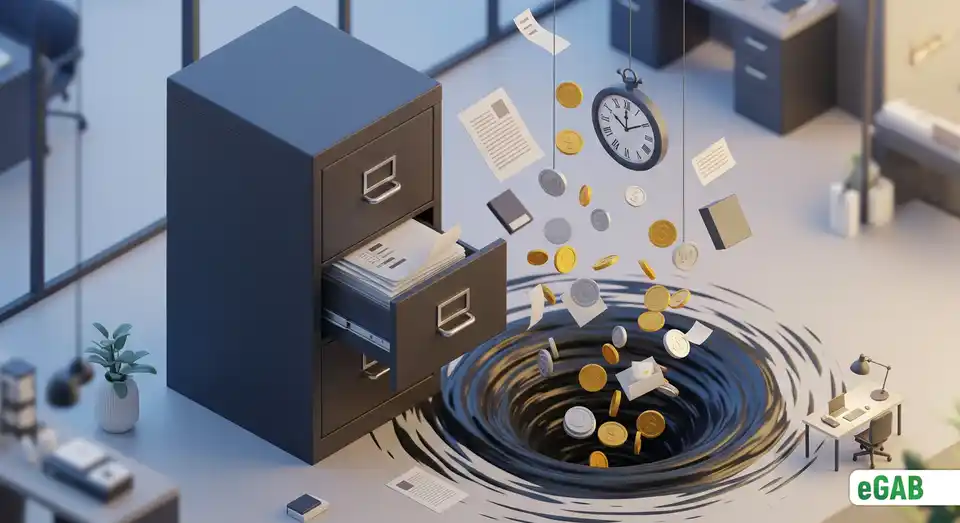
How Much Time Are Your Employees Wasting on Paperwork? (A Productivity Analysis)
Is Your Office Drowning in Paper? The Real Estate Cost of Document Storage
Beyond the Shredder: 5 Critical Data Security Risks of Paper Documents
Why Your Paper-Based Office is Failing Your Remote Team
The Environmental Footprint of a Single Paper Document: A 2025 Report
